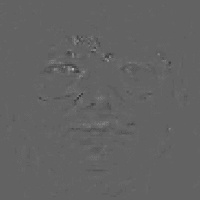
Hallucinating Faces
We have developed an algorithm that can be used to learn a prior on the spatial distribution of the image gradient for frontal images of faces. We have shown how such a prior can be incorporated into a super-resolution algorithm to yield 4-8 fold improvements in resolution (16-64 times as many pixels) using as few as 2-3 images. The additional pixels are, in effect, hallucinated. An example of the results of our algorithm is shown below:

Displaying 6 Publications
2002
Journal Article, IEEE Transactions on Pattern Analysis and Machine Intelligence, Vol. 24, No. 9, pp. 1167 - 1183, September, 2002
2001
Book Section/Chapter, Super-Resolution Imaging, pp. 243 - 276, September, 2001
Workshop Paper, IEEE EURASIP '01 Workshop on Nonlinear Signal and Image Processing (NSIP '01), June, 2001
2000
Conference Paper, Proceedings of (CVPR) Computer Vision and Pattern Recognition, Vol. 2, pp. 372 - 379, June, 2000
Conference Paper, Proceedings of 4th IEEE International Conference on Automatic Face and Gesture Recognition (FG '00), pp. 83 - 88, March, 2000
1999
Tech. Report, CMU-RI-TR-99-32, Robotics Institute, Carnegie Mellon University, September, 1999
